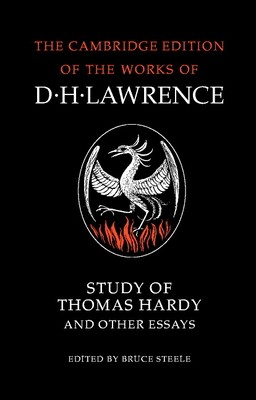
- We will send in 10–14 business days.
- Author: D H Lawrence
- Publisher: Cambridge University Press
- ISBN-10: 0521272483
- ISBN-13: 9780521272483
- Format: 14 x 21.8 x 2.3 cm, minkšti viršeliai
- Language: English
- SAVE -10% with code: EXTRA
Reviews
Description
D. H. Lawrence's 'Study of Thomas Hardy', written in the early months of World War I, was originally intended to be a short critical work on Hardy's characters, but developed into a major statement of Lawrence's philosophy of art. The introduction to this work shows its relation to Lawrence's final rewriting of The Rainbow and its place among his continual attempts to express his philosophy in a definitive form. Previously published posthumously from a corrupt typescript, the 'Study' is now more firmly based on Koteliansky's typescript - Lawrence having destroyed the manuscript. The other essays in this volume span virtually the whole of Lawrence's writing career, from 'Art and the Individual' (1908) to his last essay 'John Galsworthy', written in 1927. The introduction sets these essays in the context of Lawrence's life and work. The textual apparatus gives variant readings, and explanatory notes identify references and quotations, and offer background information.
EXTRA 10 % discount with code: EXTRA
The promotion ends in 23d.10:52:03
The discount code is valid when purchasing from 10 €. Discounts do not stack.
- Author: D H Lawrence
- Publisher: Cambridge University Press
- ISBN-10: 0521272483
- ISBN-13: 9780521272483
- Format: 14 x 21.8 x 2.3 cm, minkšti viršeliai
- Language: English English
D. H. Lawrence's 'Study of Thomas Hardy', written in the early months of World War I, was originally intended to be a short critical work on Hardy's characters, but developed into a major statement of Lawrence's philosophy of art. The introduction to this work shows its relation to Lawrence's final rewriting of The Rainbow and its place among his continual attempts to express his philosophy in a definitive form. Previously published posthumously from a corrupt typescript, the 'Study' is now more firmly based on Koteliansky's typescript - Lawrence having destroyed the manuscript. The other essays in this volume span virtually the whole of Lawrence's writing career, from 'Art and the Individual' (1908) to his last essay 'John Galsworthy', written in 1927. The introduction sets these essays in the context of Lawrence's life and work. The textual apparatus gives variant readings, and explanatory notes identify references and quotations, and offer background information.


Reviews